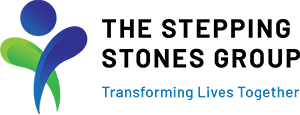In school-based services, therapists know that in order to maximize our impact, we need students to practice throughout their days, not just during their related service time.
In public schools, related services are often contracted and spread across multiple schools. This makes integrating physical therapy into the classrooms more challenging. Additionally, students may perform their goals in a therapy session, in isolation. They demonstrate goal attainment, but struggle to carry over the skills into their school program.
For our learning support students who have gross motor issues that impact their access to their school, they typically see the learning support teacher more frequently/daily. Whether in a separate classroom or pushing into the regular education classroom, our learning support teachers have a unique opportunity to see our students and how their gross motor issues impact them in the classroom.
Things that impact focus:
- A diagnosis of ADHD/Autism
- Poor seating
- Decreased posture/decreased core stability
- Age: rule of thumb is 2-5 minutes per year of age
- Learning style vs teaching style
Things we can impact:
- Awareness of contributing factors
- Seating
- Flexible options for kids who need to move
- Solid seating for kids who need trunk stability and feet flat
- Strengthening the core
- Readiness to learn
- Chunking learning opportunities with breaks for strategic movement
Gross motor strategies to impact learning
- In the regular classroom:
- Determine and address seating needs.
- Consider ball chair or wiggle seat pad
- For students with physical disabilities, ensure they are fully stable so they can focus on their work instead of staying upright
- Offer movement after a determined amount of “work”
- Send the child to the office with a backpack or heavier item to carry
- Give a choice of 2 exercises to do in the hallway
- Have the child stand at the desk and push into the desk for 30 seconds before resuming seated work
- In the Learning Support Room:
- Offer a choice of primer exercises upon arrival
- Offer a movement break with choices after an appropriate amount of work. This may start as a short interval and then the intervals can be lengthened
Set clear expectations for the movement breaks.
- Mark a box on the floor for where standing exercises should be done
- This gives a visual to keep the student in the expected spot where they will not disturb other working students and sets the expectation that this is not a free play opportunity
- Use a yoga mat for ground work
Ideas:
Centering ideas to start sessions:
- Lie prone to color to promote postural stability. If a student needs some grounding to get started, coloring in an open letter X will offer midline crossing and help center them prior to working
- Create a routine before working
- Example: Stand behind your desk.
- Stomp your feet 4 times
- Press your palms on the desk and press down 4 times
- Sit down
- Stomp your feet 4 times
- Sit up tall
- Press your palms together
- Place palms on desk, take a deep breath
- Ready to work
- Use visuals if needed to show when the next break will come
- Start with short increments until you know what the child can handle
- At the break time, direct the child to a planned space with the mat and box on the floor.
- Let the child choose their “fun” 1 minute timer and their exercise.
- Return to the desk and if needed, repeat the Ready to work routine.
As PTs supporting our students, we can offer specific exercises for our students to practice. We can create generic plans for all students to benefit from and more specialized ones for core work or crossing midline/coordination exercises when appropriate.
By supporting the students in the classroom, they practice core engagement while benefiting from the alerting or calming exercise provides so they can focus.
Author: Amy Wolstenholme

